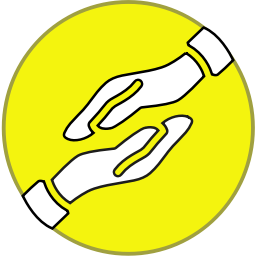How to learn cursive (行書)
There was some demand for this. I know much less cursive than I do regular script, but I'll try not to BS.
First, I'm calling 行書 "cursive" as I feel it's the most appropriate translation and its execution is closest to Latin character cursive. 草書 is more like shorthand, which I'll reluctantly call "supercursive." Others might call 行書 "semi-cursive" and 草書 "cursive".

(My everyday handwriting, and example of cursive. It sucks, but it's not wrong.)
In order to learn cursive, you must learn regular script. Cursive is 90% regular script, and its quality will depend on the quality of your regular script. In any fluent writer, cursive script is a reflection of their regular script, so the two scripts will not be significantly different unless they have deliberately made it so.
The first step to learning cursive is to solidify your understanding of regular script. If you need to, read my series on regular script starting here.
Here are some examples of what you need to look out for:
-
Stroke order. Cursive stroke order is almost identical to that of regular script. For example, in Part 5 of my regular script series, the last item on the quiz was about stroke order. You need to get that right in order to understand what’s going on here:


-
Stroke type. For example, if you are in the habit of ending 羽 with ㇀, you will not only be writing regular script wrong, but impeding your cursive with awkward strokes that don't go anywhere, and if you have this habit, then you are used to awkwardness, and these awkward strokes will go unnoticed. Below I write 羽 alone and as a component in another character with correct and incorrect stroke types. The blue arrows show the writing instrument direction.


-
Width relationships. Cursive permits a wider range of possible width relationships, but in most cases, the only correct one is identical to the regular script one. When you know the correct way(s) to write a regular script character, the cursive character will come naturally. Below, I show correct and incorrect width relationships in regular script, and their effect if translated to cursive.

-
Most common variants. When writing regular script, you can get away with only knowing an orthodox variant, but if the orthodox variant isn't also the most common variant, you will need to learn the most common variant, because the most common form in cursive is almost always based on the most common variant in regular script. Below, I have written (from right to left) an orthodox variant, the most common variant, and cursive. It is rare to find these characters written in orthodox form, and rarer to find them written in cursive based on the orthodox form.

-
Common abbreviations. Many abbreviations found in regular script, often making the difference between the orthodox and most common variant, are also found in cursive. Below I write a character in orthodox form, and again employ some abbreviation(s), and then all of them in cursive.

Once you are confident with these things, you will have established regular script, one extreme in the range of cursive. From this, simply writing regular script fast enough that inertia overpowers your willingness to maintain a clean line will result in a cursive effect. The other extreme of cursive is supercursive (草書). Cursive exists somewhere between these two. For now, because you (probably) don't know supercursive, your cursive would lean toward regular script. Later, if you learn supercursive, you will be able to add supercursive features to your cursive, therefore pushing it more toward supercursive. For example, the way I wrote 隹 in 雖 is a supercursive feature because supercursive draws more on clerical script (隸書) than regular script. If I wanted to, I could also turn 彳 into 氵 or 冫 or 丨, which would be another supercursive feature. Cursive also has its own unique features, such as an abbreviation of 門 rarely seen in supercursive and never in regular script. The best way to pick up these features is to read other people's handwriting.
The best examples of cursive are from Wang Xizhi, Wang Xianzhi, and Zhao Mengfu. I recommend that when practicing someone else's cursive, only aim to reproduce the major features instead of producing a precise copy, as precision is not a primary goal in cursive. As for resources, I've linked to a 書法字典 (search in Simplified Chinese) numerous times in this post. Whole documents can be found here. One particular publication that has helped me a lot is 《王羲之行書字典》. It's about 400 pages of cursive characters. If you take half a day to look through that, it will beat going over the various ways different components are written in cursive.
-
 6
6
-
 1
1


0 Comments
Recommended Comments
There are no comments to display.